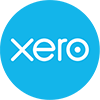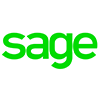Our content is funded in part by commercial partnerships, at no extra cost to you and without impact to our editorial impartiality. Click to Learn More
Our in-depth research shows that FreshBooks is the best restaurant accounting software because it offers inventory management and time-tracking across all plans, while maintaining a strong accounts receivable process and reporting tools.
Other accounting services worth considering includes Zoho, for its great support and low prices; and Xero, the top service for budget tracking.
Our researchers tested every feature and ranked every software platform to bring you the best. Due to their work, the reviews below break down all you’ll need to know before taking the next step and checking for the best deals each software platform offers.
In this guide:
| Tech.co review score | Price from | Pros | Cons | Best Restaurant Accounting Software for: | Try now | ||
|---|---|---|---|---|---|---|---|
| FreshBooks | Xero | Zoho Books | Sage | ||||
| 3.8 | 4.5 | 4.0 | 3.7 | ||||
|
| |||||||
|
|
|
| ||||
|
|
|
| ||||
| Best Value for Money | Best for Tracking Budgets | Best for Managing Suppliers | Best for Understanding Cashflow | ||||
| Try FreshBooks | Try Xero now | Try Zoho Books | Try Sage today |

Pros
- Great profit and loss comparisons
- Easy import and export for data
- Automated invoicing
- 30-day free trial
Cons
- The $10/user upcharge adds up fast
- No native support for payroll processing
- Price from: $17/Month

- 30-Day Free Trial

- Deal: 50% off the first 3 months

Features
FreshBooks offers the best value for its cost out of all the best accounting software we looked at during our research. Our team of researchers found that FreshBooks offers inventory management features on its lowest plan (Lite), even though most accounting software reserves this for higher priced plans. Plus, that low plan includes a time tracking tool and a granular accounts receivable functionality, contributing to our researchers’ 5/5 scores for both accounts receivable features and software attributes.
FreshBooks lets users on all plans track billable hours and include them in invoices, earning a strong 4.2/5 score for financial reporting tools. However, the service’s lowest plan isn’t perfect because it caps clients at five, restricting its use to businesses with limited clients, or with clients they don’t need to track through their accounting software (clients are unlimited across almost all Xero, Zoho, and Sage plans). If client limits are a concern, Zoho Books is a great alternative option because it has a free plan that allows for more invoicing and clients than the FreshBooks Lite plan.
Another plus is that FreshBooks integrates with top ecommerce platforms, including Squarespace, Shopify, and Bigcommerce. This makes it a smart choice for restaurants that use those platforms for their online presence.
Budgeting and cash-flow projection tools are not included across any of its plans.
Pricing
FreshBooks has three main plans (Lite, Plus, and Premium), as well as an Enterprise plan at a custom quote that you’ll have to contact the company to receive. Each plan has a cap on the number of supported clients, with Premium offering an unlimited number. Lite should be a good fit for many businesses, due to an above-average number of features.
| Price | Price (Billed yearly) | Users | Clients | ||
|---|---|---|---|---|---|
| CHEAPEST PLAN | |||||
| Lite | Plus | Premium | Select | ||
| 1 | 1 | 1 | 2 | ||
| 5 | 50 | Unlimited | Unlimited |

Pros
- Works effortlessly with platforms such as Shopify, Squarespace, and Square Online
- Integrates with Amazon, Etsy, and other ecommerce sites
- Impressive mobile apps
Cons
- Doesn't track expenses as standard
- Price from: $13/month

- 30-day free trial

- Payroll with Gusto: From $40/month

Features
Our researchers found that Xero is the only accounting platform to include an easy-to-use budgeting tool with all of its plans, making it the best software for restaurants that prioritize their budgets.
It’s also one of the few choices that provides a feature for recording fixed assets across all its plans, integrating with multiple leading hospitality POS systems, from Square and EPOS Now to Nobly and Revel. If your restaurant has numerous assets to manage, Xero can help.
Xero stands out with onboarding, earning a score of 4.3/5 in our in-depth research because it offers newbies a demo, relevant knowledge base articles, and a video tutorial. In comparison, FreshBooks earns a 0.8/5 in the same category because it only offers some interface sign-posting to point out features. It must be mentioned that Sage does tie Xero in the category because it has its own knowledge base and video tutorial.
Xero’s live support options were more limited, lacking the phone support that FreshBooks and Zoho offer as well as the live chat option available from Zoho and Sage.
Pricing
Xero offers three plans: Early, Growing, and Established. Of these, Early is the only plan with a meaningful cap on core functionality, with a maximum of 20 clients and a user limit of up to five bills per month, putting a severe limit on the accounts payable functionality.
| Price | Users | Clients | ||
|---|---|---|---|---|
| Early | Growing | Established | ||
| Unlimited | Unlimited | Unlimited | ||
| 20 | Unlimited | Unlimited |

Pros
- Large invoice limit on lowest tier
- Provides project accounting functionality at a cheaper rate than competitors
- Extensive accounts receivable functionality
Cons
- Accounts payable functionality unavailable on lowest tier
- Limited integrations
- Charges an extra fee per month for document scanning
- Price from: $15/month (after free plan)

- 14-day free trial

- Permanent free plan, if annual revenue < $50K

Features
Zoho’s accounting service, Zoho Books, provides a cheaper offering that still offers the most core accounts receivable features. In other words, it’s the lowest cost tool for billing a lot of clients or dealing with a lot of suppliers.
Users can send up to 5,000 invoices per year, all to an unlimited number of clients. Zoho can integrate with multiple payment processing services, so users can choose how to process incoming payments.
With Zoho, users are also able to access project accounting features at a lower cost than most accounting platforms. Accounts receivable is well covered, too, with features for invoicing and managing outstanding payments.
In sharp contrast to FreshBooks, you will only gain access to inventory management tools with Zoho’s most expensive plan. Integrations are limited as well, and document scanning will cost an additional each month.
Pricing
Zoho Books comes with an impressive six plans, ranging in cost from free to $240 per month. We’d recommend starting with Free, and upgrading depending on the specific features you need.
| Price | Users | Inventory management | Track expenses | Record payments in multiple currencies | Custom reports | ||
|---|---|---|---|---|---|---|---|
| Free | Standard | Professional | Premium | Elite | Ultimate | ||
| 1 | 3 | 5 | 10 | 10 | 15 | ||
| | | | | | | ||
| | | | | | | ||
| | | | | | | ||
| | | | | | |
Read our full Zoho Books review for more details on the benefits and downsides to each of Zoho’s accounting plans.
4. Sage – Best for Understanding Cashflow

Pros
- Easy to use
- Integrates with Microsoft 365
- 30-day free trial
Cons
- App selection is limited
- Expensive and clunky per-user pricing
- Price from: $10/Month

- 30-Day Free Trial

- Deal: 70% off the first 6 mos

Features
Every other service on this list just offers a cashflow statement, but Sage goes farther to give users a cashflow projection tool, so users can be prepared for future income in order to best maximize their profit.
Sage offers a great accounts receivable featureset. And, since it is inexpensive and does not cap the number of clients or invoices even on its lowest plan, Sage is a great accounting solution for a tiny restaurant that aims to scale up.
Restrictions worth noting: Sage doesn’t offer any project accounting functionality, its lowest plan doesn’t let users give their accountant access to the service, and the highest plan is the only one to offer inventory management (that’s worse than FreshBooks, but better than Zoho, which doesn’t offer inventory management at all).
Pricing
Sage keeps things simple with just two price plans: Start, for $10 per month, and Standard, for $25 per month. If inventory management or access for an accountant are important to your business needs, go for Standard, but otherwise Start should work.
Best Free Plan – Zoho
Zoho offers the best free plan because it comes with a large 1,000-per-year invoice limit, a client portal, automatic payment reminders, and multi-lingual invoicing. All four restaurant software services on this list have 30-day free trials, but only Zoho has a permanently free plan. All the other providers’ plans start at comparable prices, ranging from $10 to $11 per month. Keep in mind that there is a downside to a free plan: the lack of functionality. The paid plans can ultimately save your business money in the mid- to long run.
Best for Help & Support -Zoho
Zoho Books is also the best offering on this list for help and support options, earning a score of 4/5 from our impartial research team. Zoho provides a knowledge base, a community forum, and live chat support to all users. If you’re on its Advanced plan, you also gain access to 24/7 phone and email support. In contrast, FreshBooks (2.1/5) offers phone and email support, but no live chat or around-the-clock service, while Sage (2.9/5) offers live chat and an above-average onboarding function, but no 24/7 support for phone or email.
Verdict & Next Steps
The best restaurant accounting service is FreshBooks, for its inexpensive inventory management and accounts receivable features, as well as its ecommerce integrations.
However, Zoho does have great accounting software for restaurants as well. It offers stellar support and a permanent free plan, which can help a small operation thrive.
But don’t take our word for it, to see all of the best deals on these top accounting services, take a quick look at our well-researched comparison page:
How We Research and Compare Accounting Software
We take our impartial research and analysis seriously, so you can have complete confidence that we're giving you the clearest, most useful recommendations.
After conducting an initial exploration to identify the most relevant, popular, and established tools in the market, we put them through their paces with hands-on testing to see their real strengths and weaknesses. In this case, we put eight accounting software products to the test across 111 areas of investigation.
Based on years of market and user needs research, we've established an accounting software testing methodology that scores each product in four main categories of investigation and 24 subcategories; this covers everything from the features and functionality to pricing, and much more.
Our main testing categories for accounting software are:
Help and Support: the assistance and resources available to users when they encounter issues or need guidance while using the accounting software. This can include documentation, tutorials, knowledge bases, email or chat support, phone assistance, and training resources.
Pricing: the cost associated with using the accounting software. It includes factors such as licensing fees, subscription plans, any additional charges, account limits, and payment fees.
Main Functions: the key areas of accounting that the software focuses on. This includes functionalities such as financial statements preparation, income and expense tracking, managing vendor and customer accounts, generating invoices and receipts, handling payroll and tax calculations, and providing reports for financial analysis.
Software Functionality: the software capabilities such as integrations, mobile capability, as well as any additional features outside of accounting-focused ones.
When it comes to calculating a product's final score, not all testing areas are weighted evenly, as we know some aspects matter more to our readers than others, which are merely "nice to have." After hundreds of hours, our process is complete, and the results should ensure you can find the best solution for your needs.
At Tech.co, we have a number of full time in-house researchers, who re-run this testing process regularly, to ensure our results remain reflective of the present day.
If you click on, sign up to a service through, or make a purchase through the links on our site, or use our quotes tool to receive custom pricing for your business needs, we may earn a referral fee from the supplier(s) of the technology you’re interested in. This helps Tech.co to provide free information and reviews, and carries no additional cost to you. Most importantly, it doesn’t affect our editorial impartiality. Ratings and rankings on Tech.co cannot be bought. Our reviews are based on objective research analysis. Rare exceptions to this will be marked clearly as a ‘sponsored’ table column, or explained by a full advertising disclosure on the page, in place of this one. Click to return to top of page




